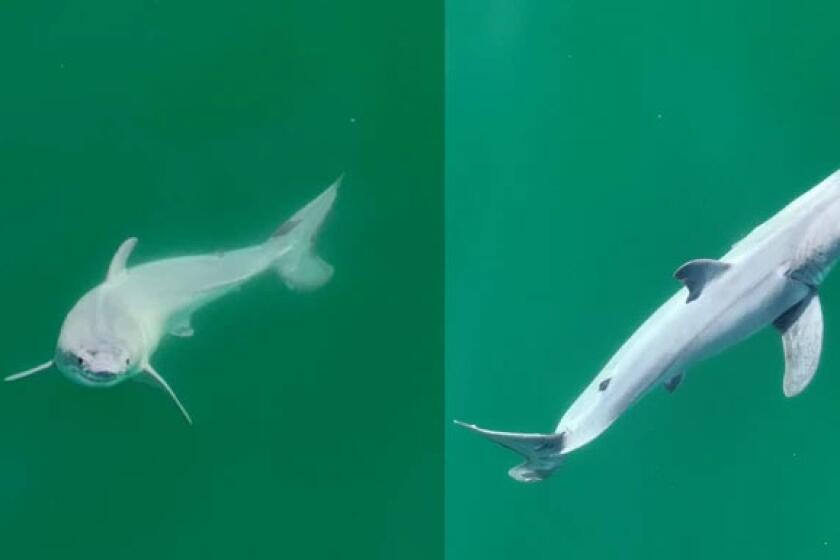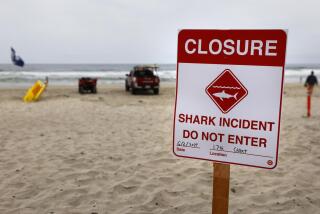Photos: The ‘smiling’ young sharks of Monterey Bay
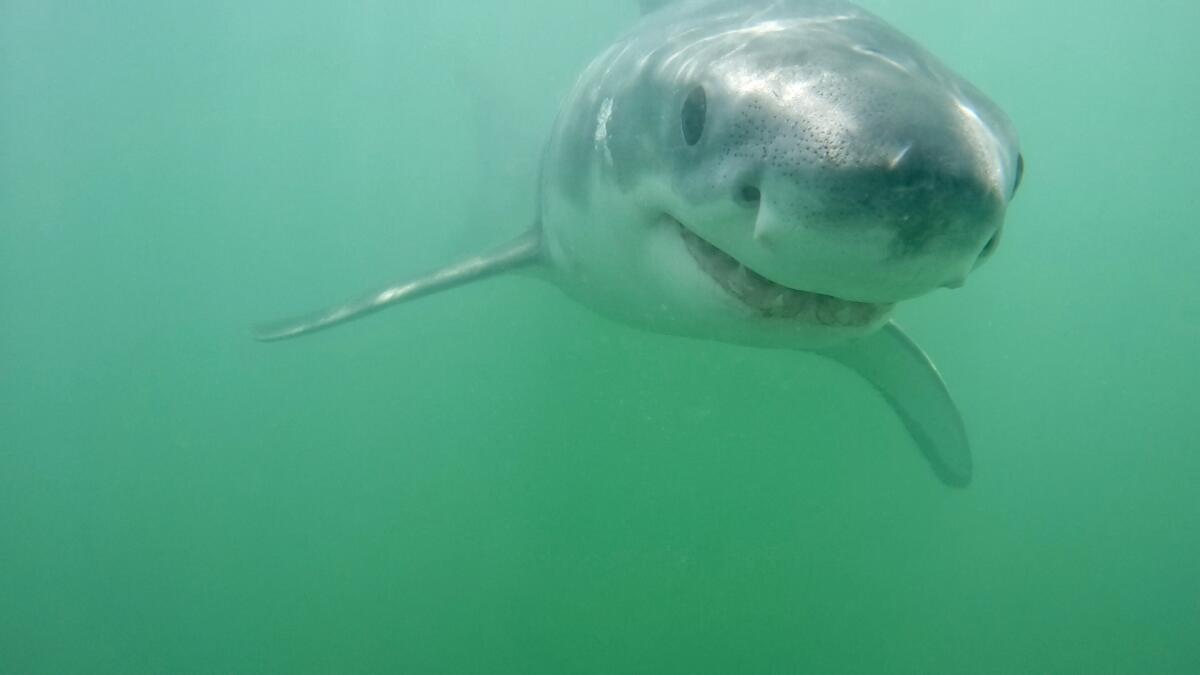
Photographer Eric Mailander was only kidding when he posted stills on social media from video he recorded showing juvenile great white sharks “smiling” as they swam in Monterey Bay.
But his inadvertent counterpoint to the annual summertime onslaught of terrifying “Shark Week” documentaries struck a chord.
News outlets from California to Great Britain carried stories featuring Mailander’s photos of the seemingly contented sharks with their mouths slightly open and pointy bottom teeth visible.
“Great white shark seen with ‘SMILE’ on its face is photographed off California coast,” beamed the online Daily Mail headline.
“Some people ran with that idea,” Mailander, 58, said Tuesday as he processed the reaction to his images.
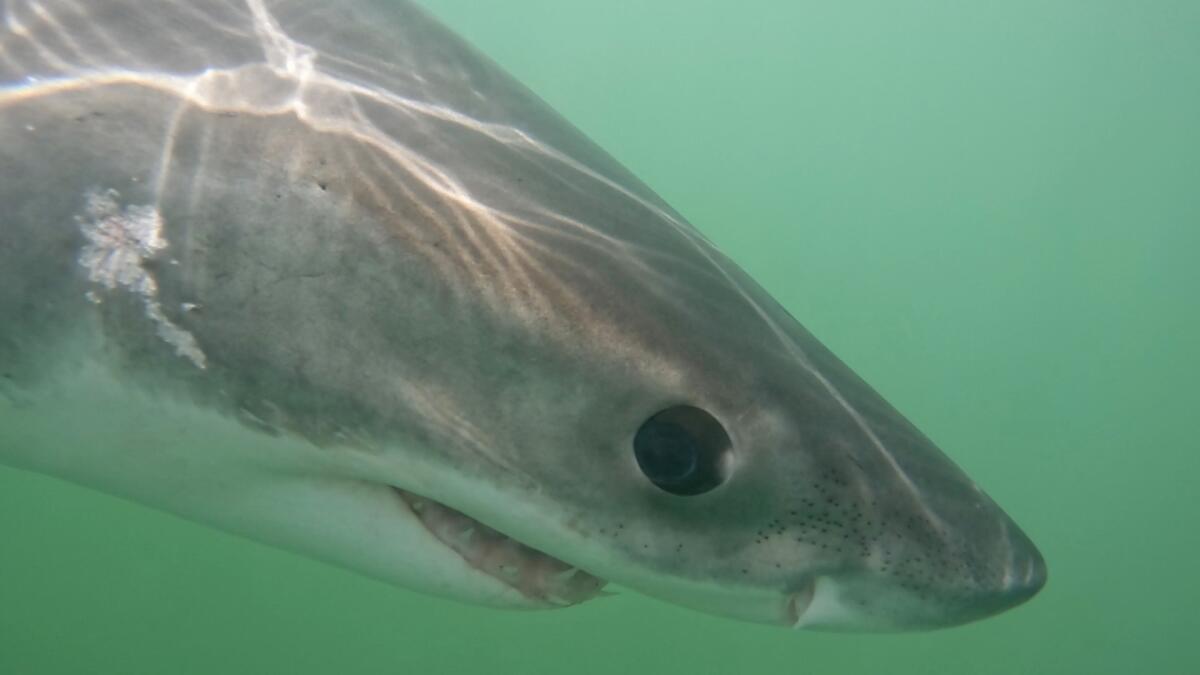
The Monterey Bay Aquarium has posted Mailander’s shark photos and videos on its website in the past, and he often helps Cal State Monterey Bay researchers identify, count and tag great white sharks in Soquel Cove, in the northern section of the bay near Santa Cruz. Locals have nicknamed the area Shark Park in part because many younger great white sharks congregate there for brief stints to enjoy the relatively warmer spring and summer water.
Mailander said he captured the latest video in the cove in June.
Mailander said the great white sharks have been migrating north from Southern California regularly since about 2015, when a heat wave in the north Pacific Ocean driven by rising global temperatures pushed warmer water into the bay.
Before that, they were rarely seen north of Point Conception in southwestern Santa Barbara County, he said.
Unlike their bulkier, more brutish-looking elders, which have the ability to raise their internal temperature above the surrounding water temperature, smaller adolescent great white sharks can’t yet regulate their body heat, Mailander said. Gliding through warm water gives them a respite from the colder depths farther out.
“It’s almost like they’re recharging their batteries,” Mailander said. “They’re just minding their own business.”
Mailander, a firefighter, lives near San Jose and calls himself a “citizen scientist.” He’s been filming sharks and logging sightings in the bay since 2017, taking drone video from above as well as using a GoPro camera mounted on an extendable painter’s pole at or just below the water’s surface. He says the cove is special because it’s one of the few places in the world where you can reliably spot young white sharks in their natural habitat.
The sharks sometimes swim so close to shore to warm their bodies that they mosey into the breaker zone, as he’s seen in his drone video.
Mailander said he had lots of video of sharks swimming near the water’s surface, just below unwitting kayakers, surfers and stand-up paddleboarders.
“They’re curious,” Mailander said, “but humans are not in their diet.”
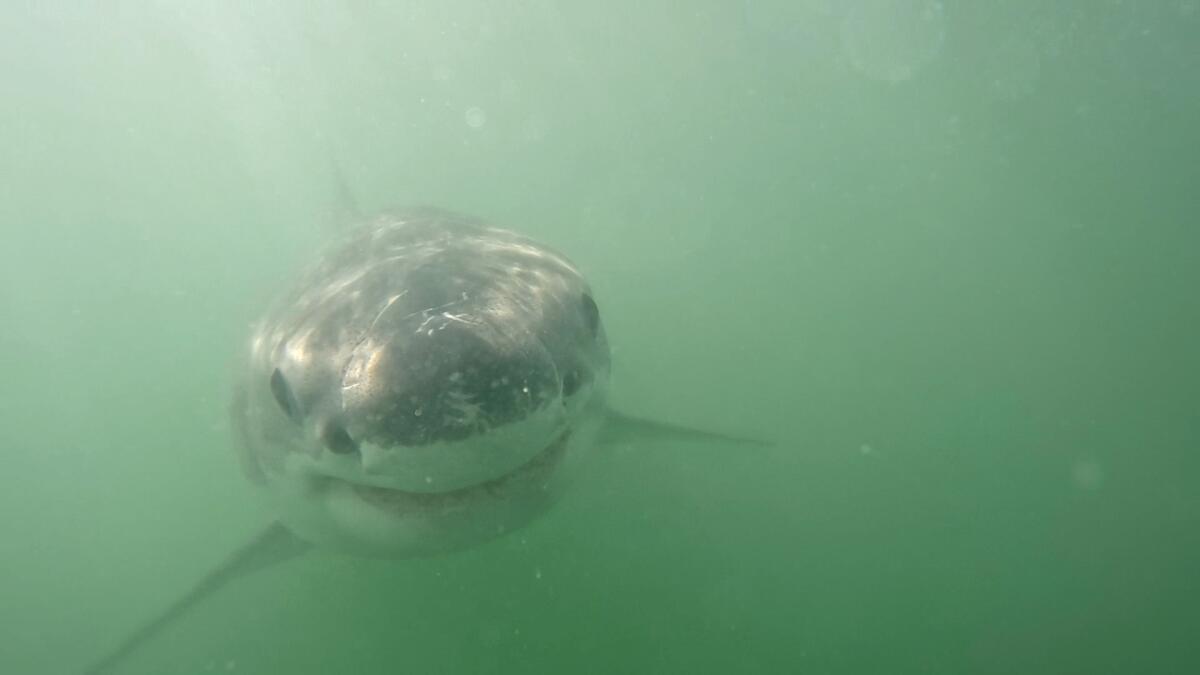
The young sharks he typically sees when out on the water on his half-cabin fishing boat range in size from 5½ to 9 feet in length, still small enough to qualify as “cute” by apex predator standards, Mailander said.
He recently joined a team that fixed an ID tag on an older, 13-foot great white that he’d seen on multiple occasions since 2019.
Scientists can tell the sharks apart by noting the contours of the dorsal fins on their backs. No two are shaped alike.
“It’s like a fingerprint,” Mailander said.
There’s a perfectly simple explanation for the sharks’ enigmatic grin too, he said — survival.
The sharks must stay in constant motion or they’ll suffocate. They swim with their mouths open to funnel water past their gills and extract oxygen, Mailander said.
Although the sharks aren’t really smiling in his video stills, Mailander said he’s hopeful that his evocative images will help dispel pop culture portrayals of the sharks as voracious man-eaters and inspire more people to see the need to safeguard them and their habitats.
Researchers at UC Riverside captured footage off the coast of Santa Barbara that’s believed to be the first of a newborn great white shark in the wild.
His photos come months after a UC Riverside researcher and a filmmaker captured, in the water off Santa Barbara, what’s believed to be the first-ever video of a newborn great white shark in its natural setting.
“People fear sharks — it’s a primordial instinct,” Mailander said. “The message is that the sharks shouldn’t be feared. ... They should be protected and they should be treated as any other wild animal, like a grizzly bear, a wolf or a mountain lion. They play a role in nature.”
